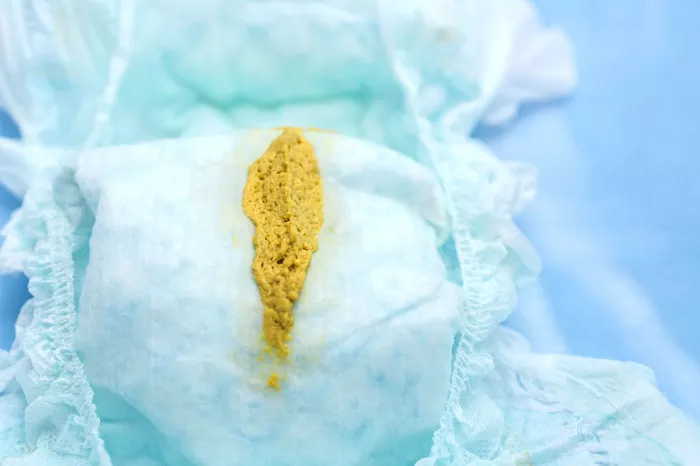Diaper changes are a significant aspect of caring for a newborn. For parents, understanding what is normal for their baby’s bowel movements is essential. At two weeks old, a baby’s diaper patterns can provide critical insights into their health and nutrition. This article delves into the expected frequency and characteristics of poop diapers for a 2-week-old baby, offering guidance and reassurance to new parents.
Frequency of Poop Diapers in a 2-Week-Old
Newborn Digestion and Poop Frequency
A 2-week-old baby is still adapting to life outside the womb. Their digestive system is maturing, and they are typically either breastfed or formula-fed, both of which can influence the frequency and consistency of their stools.
Breastfed Babies:
In the first few weeks, breastfed babies usually have frequent bowel movements.
They might have as many as 5-10 poop diapers per day.
The frequency can be attributed to the ease with which breast milk is digested.
Formula-Fed Babies:
Formula-fed babies tend to have fewer bowel movements compared to breastfed babies.
Typically, they might have around 1-4 poop diapers per day.
Formula is generally more difficult to digest than breast milk, resulting in less frequent stools.
Characteristics of a Healthy Poop Diaper
What to Expect in the Diaper
The appearance of a baby’s stool can vary, and understanding these variations can help parents gauge their baby’s health and well-being.
Breastfed Babies:
Their stools are usually yellow, seedy, and runny.
They may appear to have small curds, which are undigested milk particles.
The smell is typically mild and not very offensive.
Formula-Fed Babies:
Their stools are usually firmer than those of breastfed babies.
The color can range from yellow to brown.
The smell is often stronger compared to breastfed babies.
Variations in Stool Color and Consistency
It’s important to recognize that stool color and consistency can change due to various factors. Here’s a guide to understanding these changes:
Normal Variations:
Greenish stools can occur and are generally normal.
Slight changes in consistency are typically not a cause for concern.
When to Worry:
White or pale stools can indicate a liver problem and need immediate medical attention.
Red stools may suggest bleeding and require prompt consultation with a healthcare provider.
Black stools (after the meconium phase) could indicate internal bleeding and should be evaluated by a doctor.
SEE ALSO: How Often Do Formula-Fed Newborns Poop?
Signs of Digestive Health in a 2-Week-Old
Assessing Digestive Health
Monitoring your baby’s bowel movements is a window into their digestive health. Here are some signs to consider:
Adequate Hydration:
Wet diapers are a good indicator of proper hydration.
A baby should have at least 6-8 wet diapers per day.
Regular Bowel Movements:
Consistent bowel movements suggest that the baby is digesting food properly.
Sudden changes in frequency may need attention.
Baby’s Comfort:
A content baby during and after feeding typically means their digestive system is functioning well.
Excessive fussiness or discomfort may indicate digestive issues.
Common Concerns and Solutions
Addressing Parental Concerns
New parents often have several concerns regarding their baby’s bowel movements. Here are some common issues and their solutions:
Constipation:
Signs: Infrequent, hard stools, and straining.
Solution: For breastfed babies, ensure frequent feedings. For formula-fed babies, check with a pediatrician about adjusting the formula or adding water.
Diarrhea:
Signs: Very loose or watery stools, often with increased frequency.
Solution: Monitor for dehydration and consult a healthcare provider if it persists.
Diaper Rash:
Signs: Red, irritated skin around the diaper area.
Solution: Change diapers frequently, clean the area gently, and use diaper rash cream.
Tips for Managing Diaper Changes
Practical Tips for New Parents
Managing diaper changes efficiently can make life easier for parents and more comfortable for babies.
Prepare Ahead:
Keep diapers, wipes, and rash cream within reach.
Have a changing pad ready for a clean and safe diaper change.
Clean Thoroughly:
Wipe from front to back to prevent infections.
Use gentle, unscented wipes to avoid irritation.
Observe and Record:
Keep a log of diaper changes to track frequency and characteristics.
Note any significant changes to discuss with a healthcare provider.
Diapering Techniques:
Ensure the diaper is snug but not too tight.
For boys, point the penis downward to prevent leaks.
Conclusion
Understanding the typical frequency and characteristics of poop diapers for a 2-week-old baby is crucial for new parents. While every baby is unique, and variations are normal, keeping an eye on bowel movements can provide valuable insights into your baby’s health. Frequent, healthy stools, along with adequate hydration and comfort, are signs that your baby is thriving. If you have any concerns, do not hesitate to consult your pediatrician to ensure your baby’s well-being.


